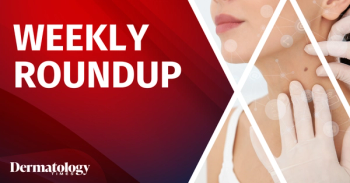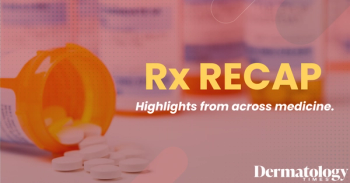
Deuruxolitinib is Most Effective Monotherapy for Alopecia, According to Meta-Analysis
Key Takeaways
- Deuruxolitinib 12 mg twice daily was the most effective JAKI for alopecia areata, achieving high SUCRA values for SALT scores.
- No significant differences in efficacy were found among current FDA-approved JAKI regimens, though deuruxolitinib 8 mg twice daily may outperform baricitinib 2 mg daily.
A recent meta-analysis evaluates the efficacy and safety of various JAK inhibitors for alopecia areata, highlighting 12 mg twice daily deuruxolitinib as the most effective treatment.
A meta-analysis used the most updated literature to compare several Janus kinase inhibitors (JAKIs) to confirm which drug is most effective and safe for patients with alopecia areata.1 These treatments were also compared to apremilast and dupilumab. The inhibition of Janus kinases, a family of enzymes linked to immunometabolism, has been proven to help treat this disorder.2 This network meta-analysis is the first to quantitatively contrast the efficacy of various monotherapies for alopecia areata.
The systematic review occurred on January 7, 2025, and was paired with a Bayesian network meta-analysis of 14 trials. The study compared each therapy’s efficacy and safety using the Surface Under the Cumulative RAnking (SUCRA) values, based on the Severity of Alopecia Tool (SALT) score of each trial. In particular, investigators measured the proportion of participants who reached a SALT score of 20 or less at week 24 and/or a 90% reduction in SALT score over the same time period. Results were displayed on color-coded kilim plots.
The 8 JAKIs evaluated were ruxolitinib, ATI-501, baricitinib, brepocitinib, deuruxolitinib, ivarmacitinib, ritlecitinib, and tofacitinib. These were evaluated at varying dosages and durations. The current regimens that are approved by the US Food and Drug Administration (FDA) include ritlecitinib 50 mg once daily, baricitinib 2 mg once daily, baricitinib 4 mg once daily, and deuruxolitinib 8 mg twice daily.
Deuruxolitinib, specifically at a dosage of 12 mg twice a day for 24 weeks, was the most effective based on the number of patients achieving a SALT score of ≤ 20 (SUCRA = 92.6%) and ≤ 10 (SUCRA = 97.7%). It was more effective than an 8 mg dosage for the same time interval (OR = 1.35, 95% CI = 1.13, 1.6, p < 0.05) but this dosage was more efficacious than deuruxolitinib 4 mg twice daily for 24 weeks (OR = 3.99, 95% CI = 1.11, 12.79, p < 0.05). Similar dose-dependency was noted with 4 mg and 2 mg of baricitinib (OR = 2.25, 95% CI = 1.56, 3.21, p < 0.05). Sixty mg daily of brepocitinib was also very effective (SUCRA = 92%). Deuruxolitinib 4 mg twice daily was the least effective regimen.
In terms of the current FDA approved regimens, there were no significant differences in efficacy. However, deuruxolitinib 8 mg twice daily may be more effective than baricitinib 2 mg per day. There were also no statistically significant differences in safety, adverse events, and treatment discontinuation after 23 weeks (i.e., p ≥ 0.05).
Deuruxolitinib was approved for adult patients with severe alopecia areata in July 2024.3 This was based on THRIVE-AA1 and THRIVE-AA2 phase 3 trials in which one-third of patients quickly achieved at least 80% scalp hair coverage by week 24. Common adverse events included headache, acne, and nasopharyngitis, with rarer risks like infections and blood clots.
The relatively small sample size and potential statistical difficulties in the Bayesian network meta-analysis may impact the results. Further evidence can help better understand the safety profiles and treatment predictions of these drugs, guiding clinicians in their decision-making and guidelines. Actual head-to-head multi-arm trials are recommended.
“The current NMA produced comparative evidence using 6-month outcome data. As empirical evidence regarding the effects of JAKIs on AA expands, more comparative analyses can be done for longer term efficacy,” the authors concluded.
References
1. Gupta AK, Bamimore MA, Mirmirani P, Piguet V, Talukder M. The Relative Efficacy and Safety of Monotherapies for Alopecia Areata: A Network Meta-Analysis Study. J Cosmet Dermatol. 2025;24(4):e70185. doi:10.1111/jocd.70185
2. Gupta AK, Wang T, Bamimore MA, Piguet V, Tosti A. The relative efficacy of monotherapy with Janus kinase inhibitors, dupilumab and apremilast in adults with alopecia areata: Network meta-analyses of clinical trials. J Cosmet Dermatol. 2023;22(9):2553-2559. doi:10.1111/jocd.15903
3. U.S. FDA approves LEQSELVI™ (deuruxolitinib), an oral jak inhibitor for the treatment of severe alopecia areata. News release. Sun Pharmaceutical Industries Limited. July 26, 2024. Accessed April 23, 2025.
Newsletter
Like what you’re reading? Subscribe to Dermatology Times for weekly updates on therapies, innovations, and real-world practice tips.


















